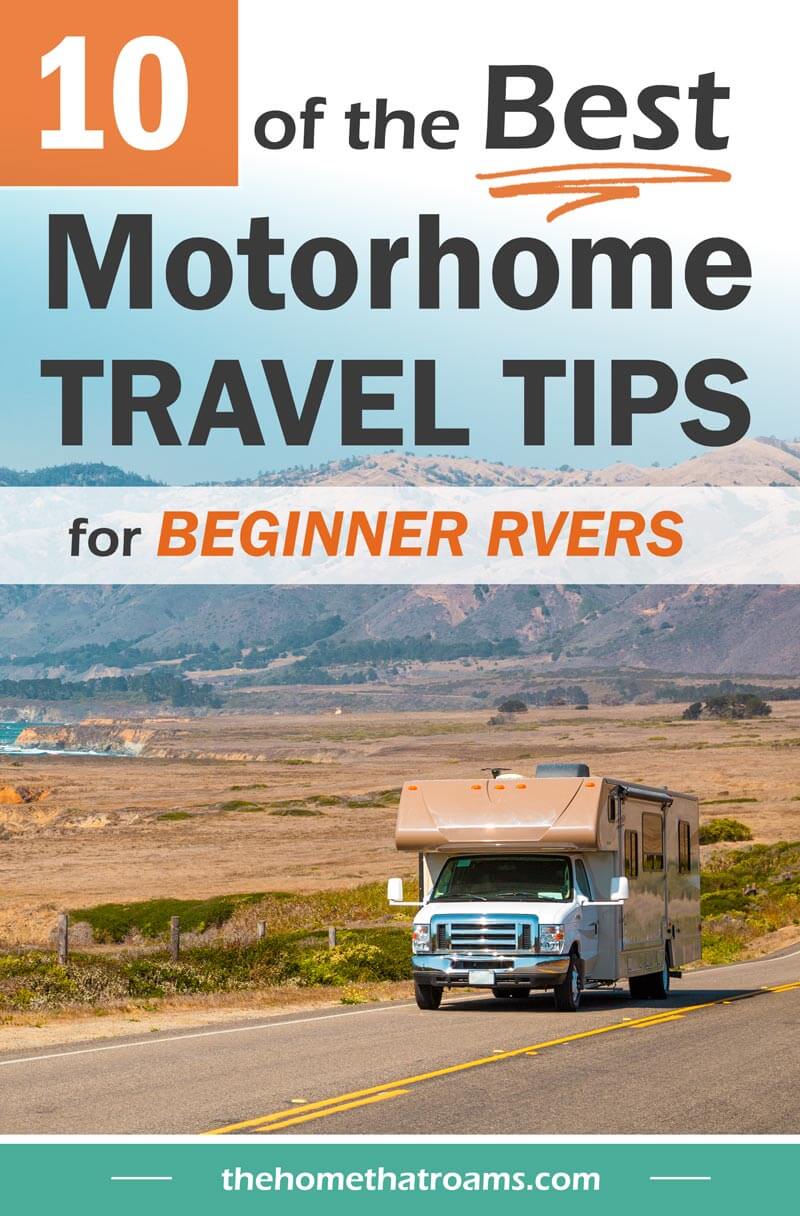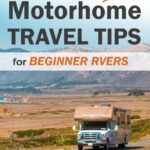10 Best Motorhome Tips for Beginners
As an Amazon Associate, we earn from qualifying purchases. We also earn from other affiliate websites. See our full disclaimer.
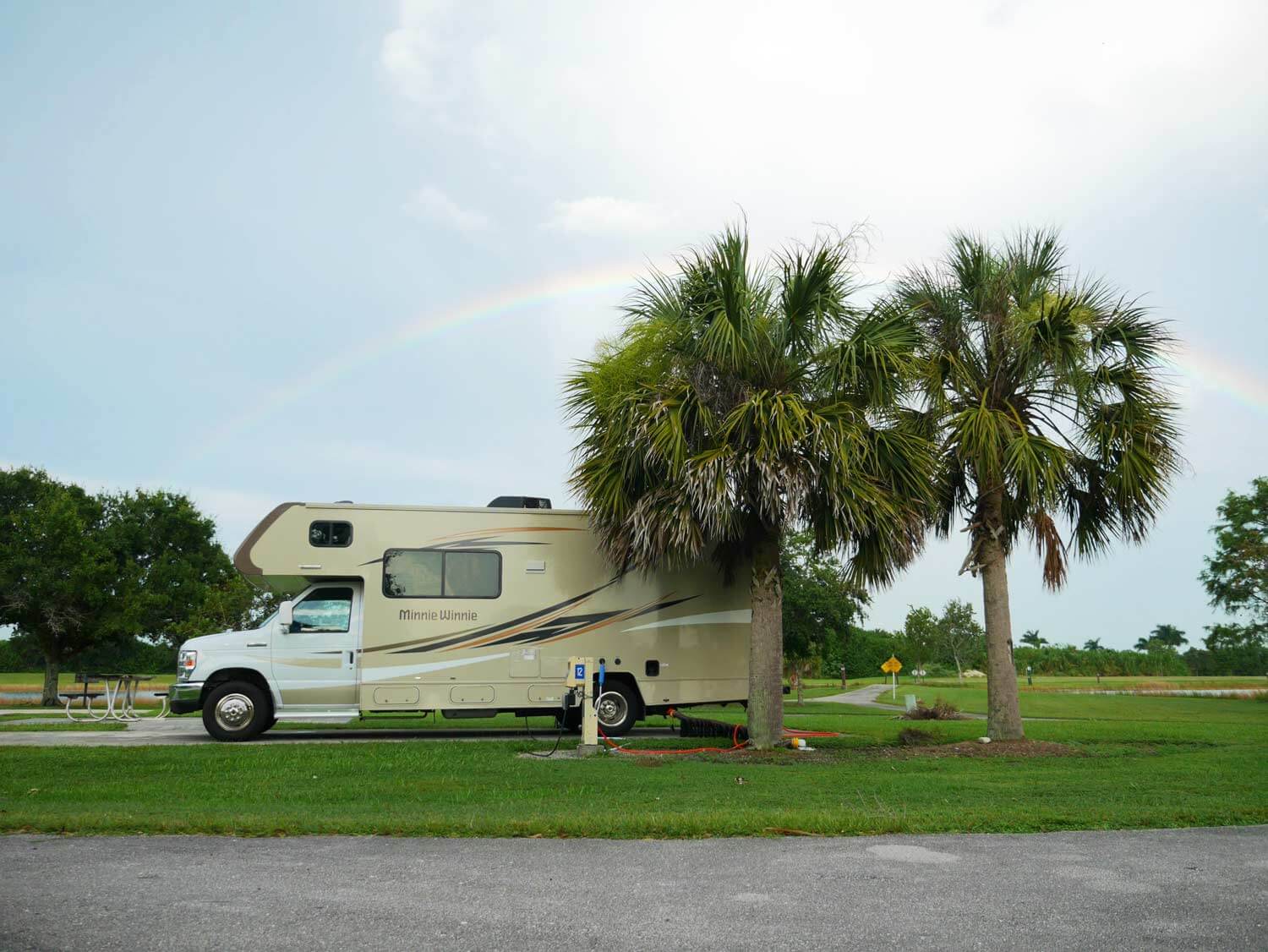
Before hitting the road in your new motorhome, there are a few things to familiarize yourself with on your rig.
A motorhome isn’t just a vehicle – it’s also a house. There are many systems and working parts that keep your home on wheels operational.
Here are our top motorhome tips for beginners to get over the learning curve and start traveling in your RV.
1. Do a Test Run
Before you head out on your first motorhome trip, try staying in your RV for a night. Cook dinner, sleep in the bed, and make breakfast. When you go through the motions, you’ll find little adjustments to make before you hit the road.
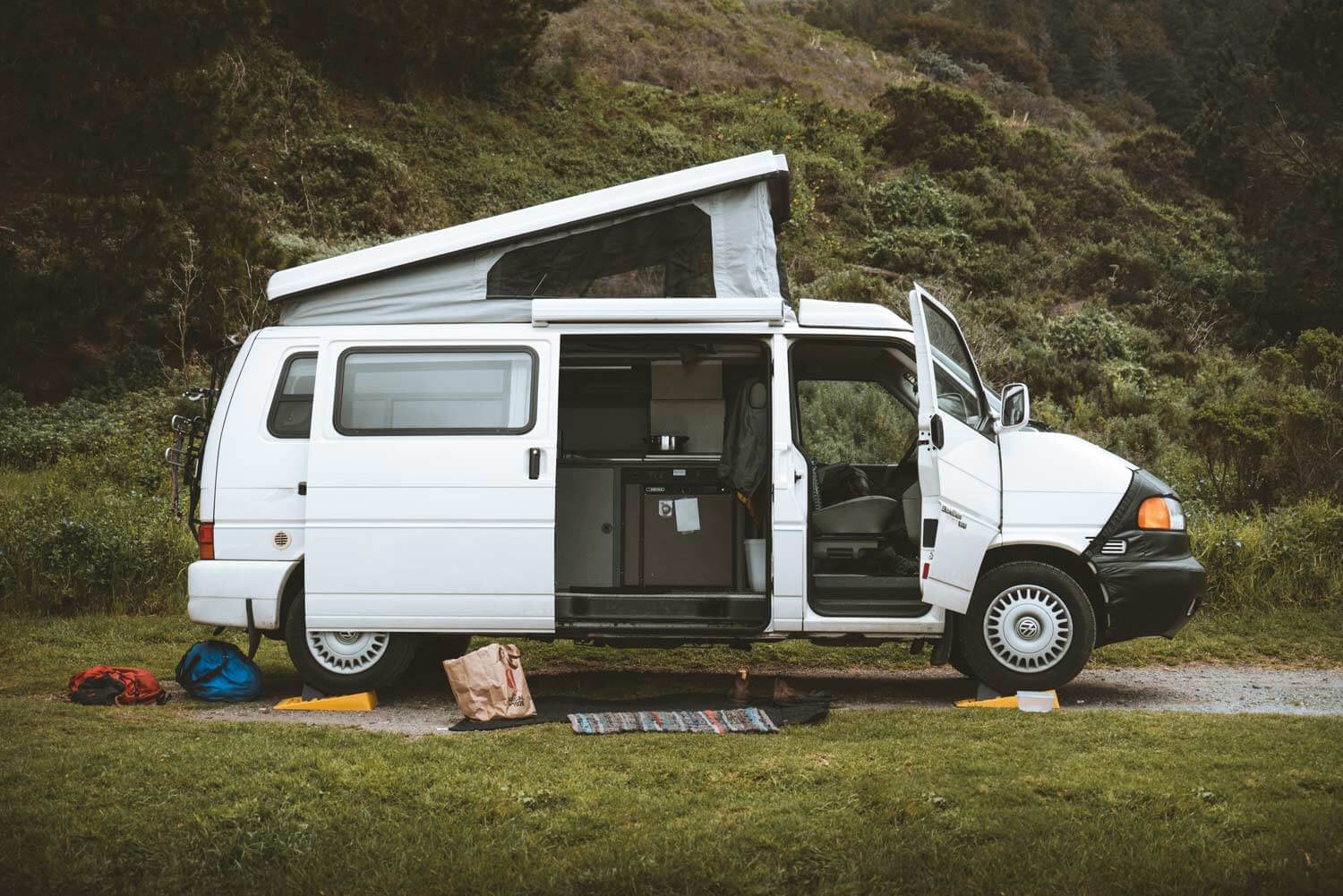
You’ll also want to test your RV systems.
- Use your RV water hose to fill up your water tank
- Use your water pump to flush your toilet, run your sink, etc.
- Go to a local dump station, and practice dumping your tanks using your sewer hose.
- If you’re on shore power (or plugged into the power grid), switch things up. Run the RV on the house battery and check everything is working correctly with your electrical systems.
- In a hot climate, run the AC on both shore power and your generator.
- Test your stove and oven, and run the fridge on propane (for 2-way fridges) to ensure it will run without shore power. Test the water heater and ducted heat if you’re in a cold climate.
- Other things to test are auto-leveling and power awnings, if available.
This is one of my top tips, since running through the systems without pressure will ease the stress once you’re on the road. The last thing you want to do is ruin the excitement of your RV trip with multiple system issues the first night at camp.
2. Don’t Overload Your Motorhome
I remember the first time we packed up our motorhome to move in full-time. We had about 75% of our stuff loaded, and we decided to go weigh the RV at a truck stop. We were very overloaded.
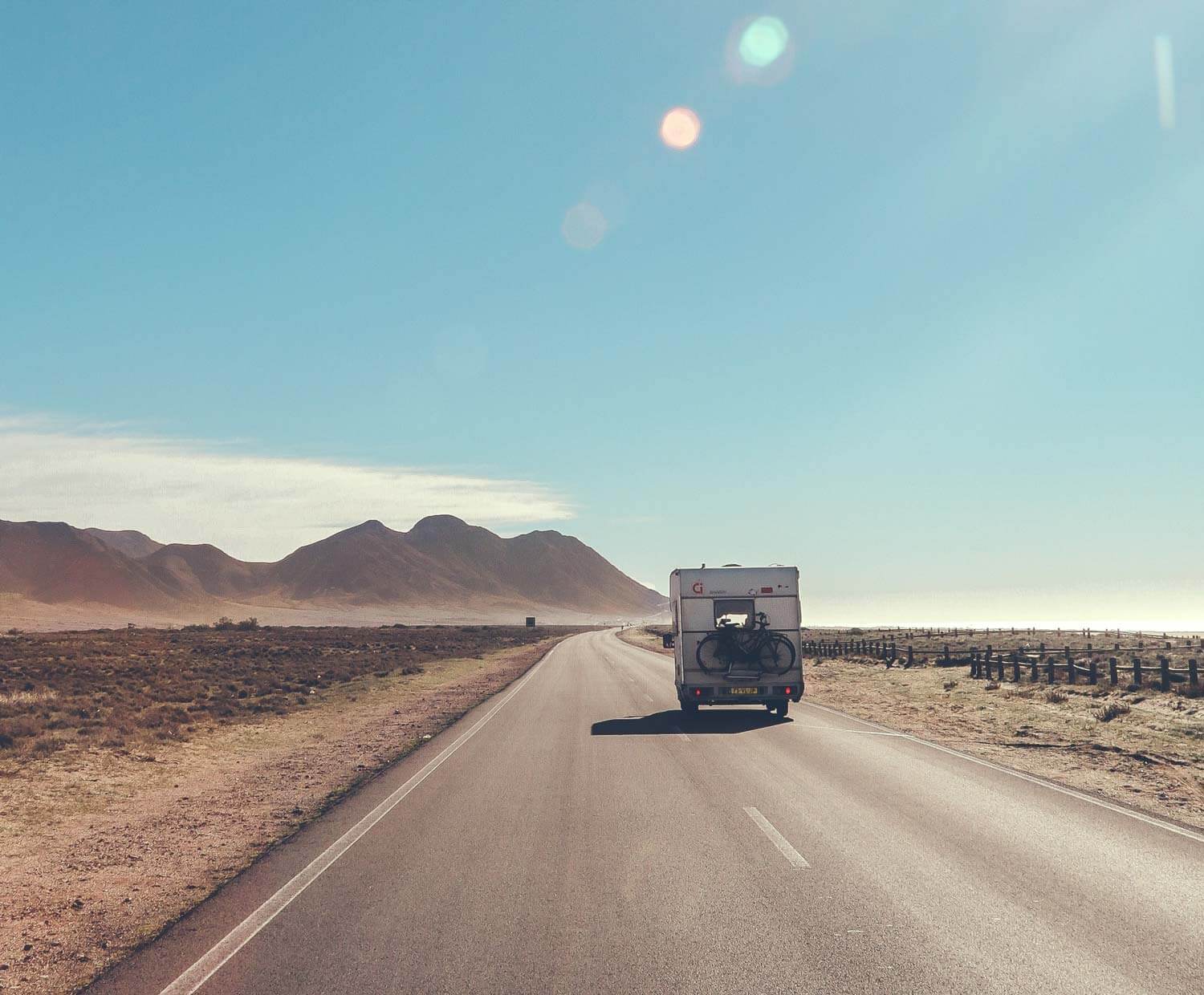
Little did I know many RVs weigh pretty close to their GVWR when they leave the factory.
GVWR (Gross Vehicle Weight Rating) – The heaviest weight determined by the manufacturer for the safe operation of your RV. This includes all cargo, fluids, passengers, and optional equipment.
So if you are planning to stuff every inch of storage space, think again.
Before you purchase your motorhome, compare the UVW with the GVWR.
UVW (Unloaded Vehicle Weight) – The RV weight as it is manufactured, including a full fuel tank, engine fluids, and any generator fluids.
Estimate how much weight capacity you need for your stuff and any persons traveling with you.
PRO TIP: Don’t forget to consider the weight of the fresh water tank, grey and black water tanks, and propane tank. This is essential to remember since a gallon of water weighs a little over 8 pounds. That adds up fast!
3. Practice Driving Your Motorhome
Operating a motorhome might be a challenge if you’ve never driven a large vehicle. The best way to prepare for your first trip is to go for a test drive and practice maneuvering your motorhome.
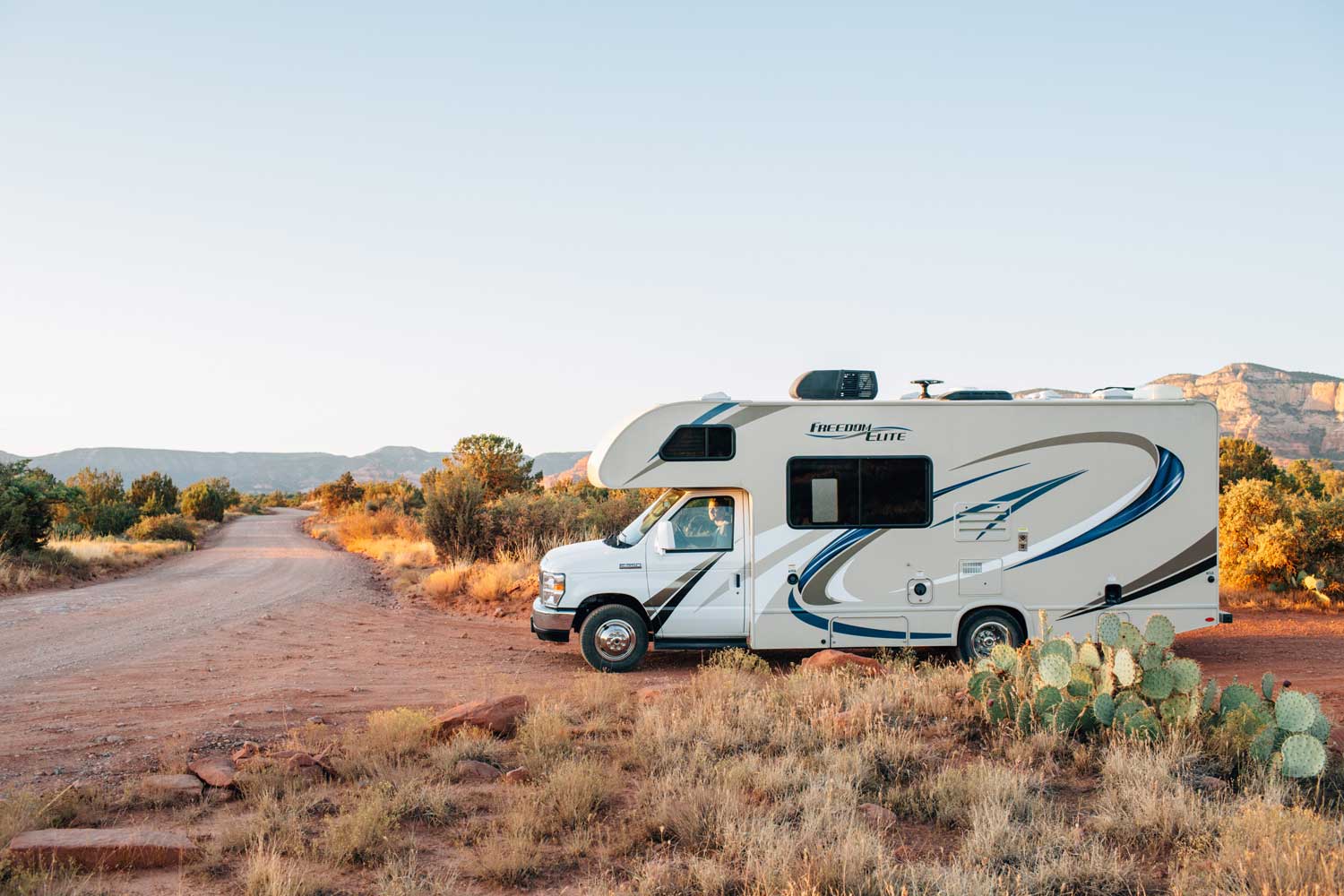
Find an empty parking lot or another remote area to practice your skills. Get a feel for your turn radius, figure out where the blind spots are, and try backing up without a rearview mirror (or using a backup camera if you have one).
If you’re traveling with a partner, practice the communication you’ll use for reversing into a campsite.
When you get out on the open road, it’s easy to forget the height of your motorhome. Ensure your motorhome height is on a sticky note on the dash for quick reference. This is especially helpful for class A motorhome owners since these vehicles can be as high as 14 feet.
NOTE: Measure the height of the RV yourself (don’t take the motorhome dealer’s word for it). Make sure to include the height of the air conditioner and any other mounted systems on top of your motorhome.
Watch out for low bridges, parking structures, and gas station canopies. Also, keep an eye on road signs and building overhangs that could clip the side of your motorhome in tight spaces.
Other Motorhome Driving Tips
Here are a few more driving tips to help motorhome owners stay safe on the road.
- REVIEW YOUR ROUTE. Make a note of narrow roads, low-clearance bridges, and toll roads. (Toll roads aren’t necessarily a bad thing. They can be well worth the cost for RVers with large rigs.)
- BRAKE EARLY. Because motorhomes are heavy, other cars on the road will be able to react quicker than you.
- DRIVE SLOWER. Everything takes more time in a motorhome, braking, merging, turning, etc. Follow the speed limit and keep a healthy amount of distance between yourself and the car in front of you.
- OPT FOR SHORT TRAVEL DAYS. Driving a motorhome (especially larger motorhomes) requires a lot more focus than a small vehicle. Travel days that are significantly more than 3 hours or 300 miles can be hard on the driver, and mistakes are more likely to happen.
PRO TIP: When stopping to get gas, we like to use truck stops or gas stations on the edge of town, so we don’t have to worry about getting in and out of a tight parking lot. You can use Google Maps to research the size of a gas station ahead of time so you don’t get caught trying to squeeze into a small area.
4. Pack the Right RV Tools
If you’re an RV beginner, you can save yourself time and frustration down the road if you have a few tools handy in your motorhome.
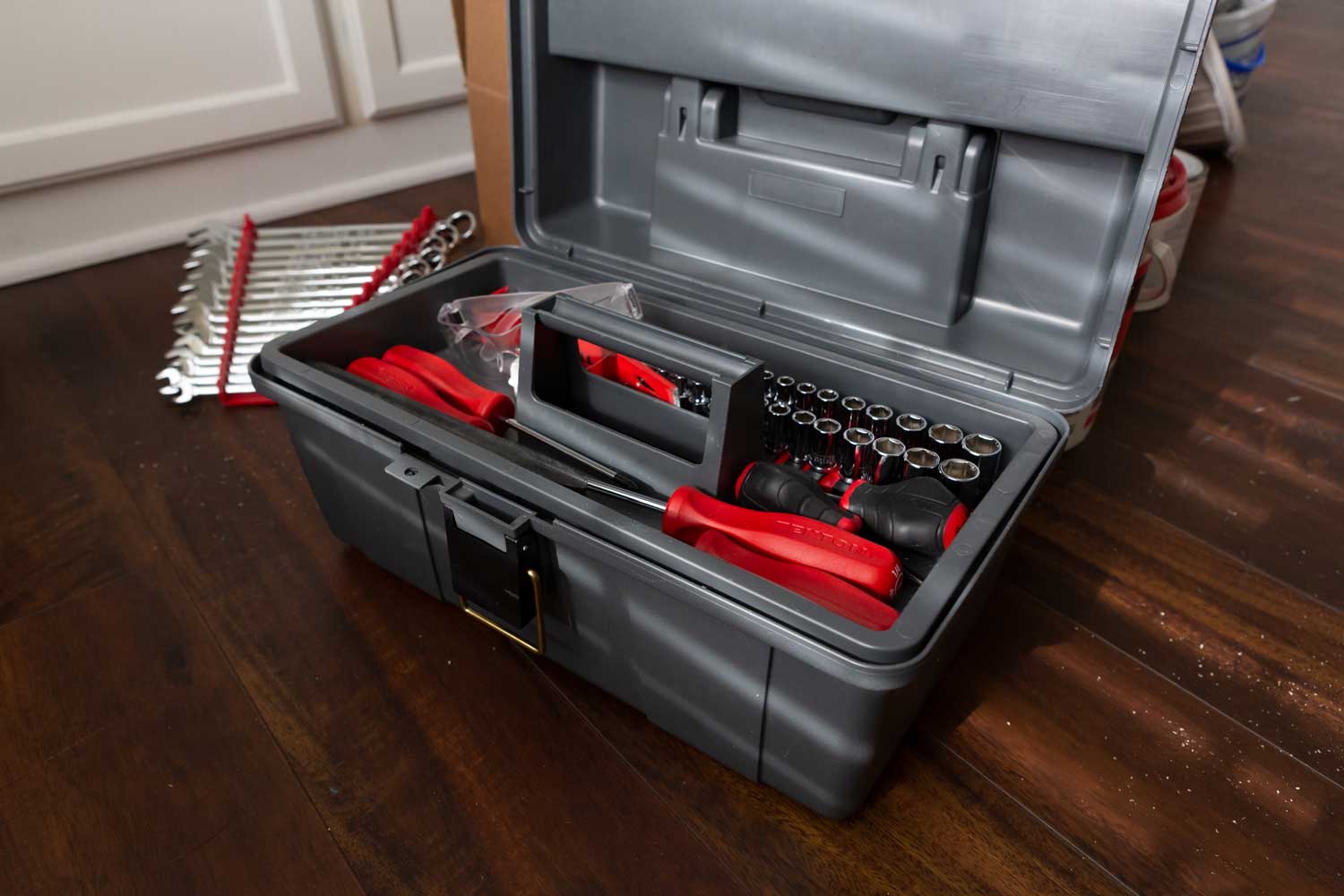
- Tire Pressure Gauge: to check tire pressure before you leave your campsite (you might need tire valve extensions for some hard-to-reach tire valves)
- Air Compressor: for easily inflating your tires and avoiding a tow in an emergency (we really like this air compressor)
- Temperature Gun: this is handy to check tire temperatures, engine temps, etc. (we have a temperature gun similar to this)
- Multimeter: easily check your house and engine batteries or troubleshoot other electrical issues (we have a multimeter similar to this)
5. Know Your RV Power Supply
When unplugged from shore power, your motorhome runs on 12-volt power, also known as battery power. When on 12-volt or DC power, you can only run things that are 12-volt or have an adapter. Modern motorhomes will have USB power ports where you can charge a phone and other USB-equipped devices.
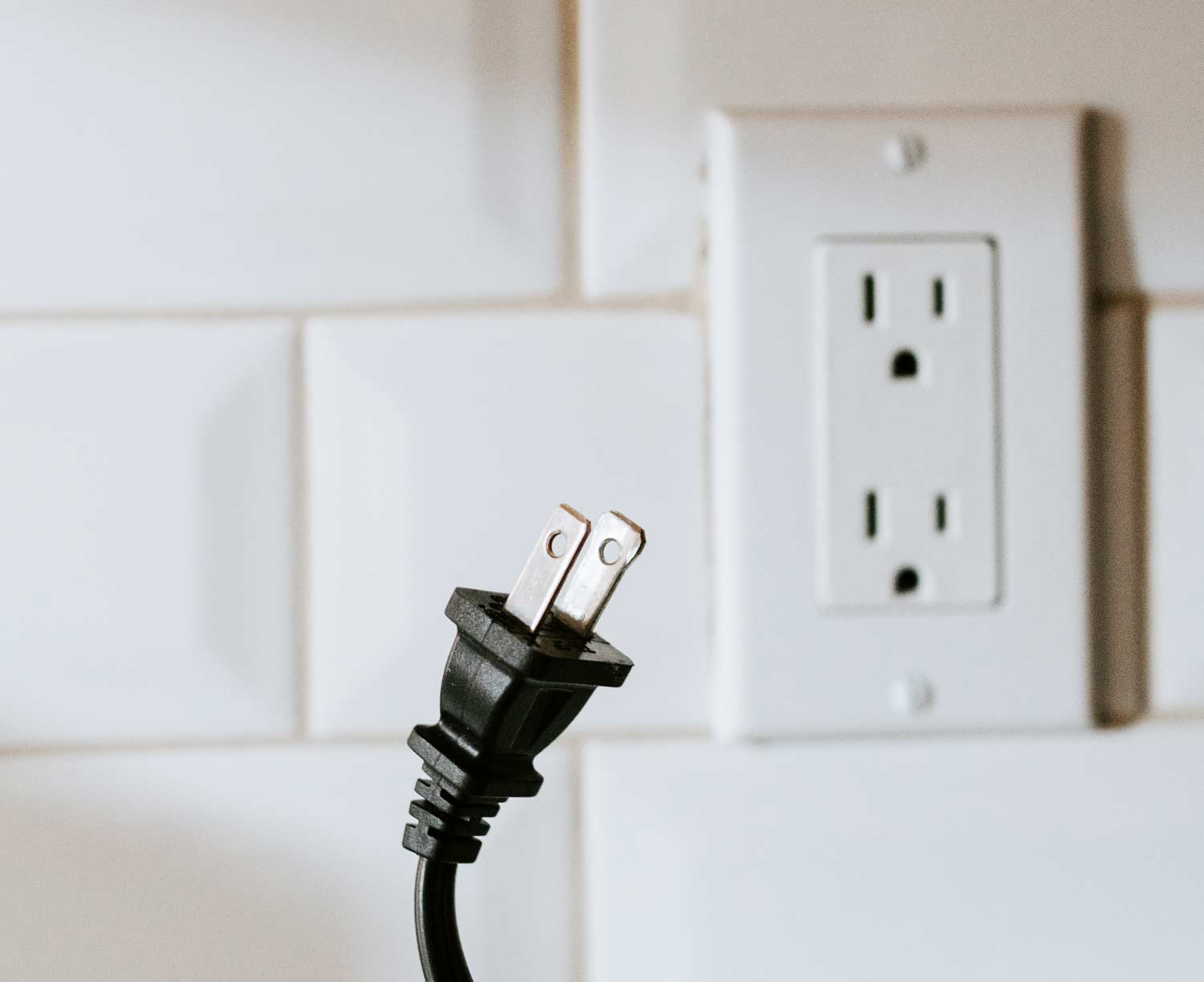
Here are a few devices to help run your motorhome on battery power when you’re dry camping:
To get 120-volt AC power (or shore power), you’ll need to plug in at a campground or run your generator. Alternatively, you can install solar panels and a large inverter.
PRO TIP: Anything with a heating element (electric kettle, hairdryer, portable space heater, etc.) will draw a lot of power. If you plan on dry camping, these items won’t be the most efficient choices for your RV trip.
6. Conserve Fresh Water
Light water usage is a habit you’ll likely need for motorhome travel.

An average class C motorhome usually has around a 40-gallon water tank. However, due to the weight, you probably won’t be riding around with a full freshwater tank.
On the opposite end of things, you’ll have to watch your grey water tank level. Your grey tank fills with the water from your kitchen sink, shower, and (typically) your bathroom sink.
To conserve your water, here are a few things you can do:
- Turn off the showerhead to lather up – only run water to wet down and rinse
- Consider a water-efficient showerhead. We upgraded to an Oxygenics showerhead to save water and increase water pressure.
- Use a collapsible tub in your kitchen sink to catch grey water from washing a dish or your hands. When convenient, empty the tub outside.
- Cook one-pot meals and other dishes that require little clean-up. When considering RV kitchen gadgets, remember to account for ease of cleaning.
READ MORE: You might also like our articles 31 Useful RV Kitchen Accessories and 11 Helpful Tips to Organize an RV Kitchen.
7. Store Items Securely in Your RV
When packing your motorhome, consider the environment when the vehicle is moving.
When you hit a bump, everything moves. And anything will rattle given a chance.

Unlike towable RVs such as fifth wheels and travel trailers, you stay in your home when you travel rather than towing it down the road. This means you’ll hear everything when it moves!
Cabinet and Drawer Storage
When we started RVing, anti-slip shelving liner was my best friend. The soft liner helps cushion items and stop rattling on travel days. It’s easy to cut to size for adding to a storage box, basket, or drawer. Or its intended purpose, a shelf. You can also add it between pots and pans to eliminate rattling.
Countertop Storage
Try to limit items stored on countertops or use double-sided nano tape or Museum Putty to secure things to the counter. This will shorten your packing time on travel days!
READ NEXT: You might also want to check out our article, Motorhome vs Travel Trailer: Which is Best for You?
8. Know How to Find Places to Stay
When you hit the road in your motorhome, you’ll want to know a few ways to find campsites or places to park for the night.

Depending on where and what time of year you are traveling, you also might want to book ahead.
For example, Florida campgrounds and state parks can be extremely tough to book in the winter months. On the other hand, a summer road trip around the popular Utah national parks can also be a challenge with a tight booking window.
Resources for Finding RV Campsites
Here are a few resources you can use to find places to stay in your RV.
- AllStays Camp & RV iPhone app provides a comprehensive map of different places to camp and park for the night, including free options.
- Campendium is another popular RV app that lists many campground and boondocking options. The paid version of the app also adds map overlays for cell service.
- Walmart, Cabela’s, and Cracker Barrel are a few stores that typically allow free overnight RV parking. Call ahead to check with a manager. Some Walmarts don’t allow overnight parking (you can read reviews in AllStays to help guide you).
- Harvest Hosts is an affordable members-only community that gives you access to over 4,000 farms, wineries, breweries, attractions, and more places to park for free across the United States and North America.
9. Do a Walk-Around Before You Leave the Campsite
Always do a walk-around of your motorhome before you drive out of your campsite or before leaving an overnight stay in a parking lot.
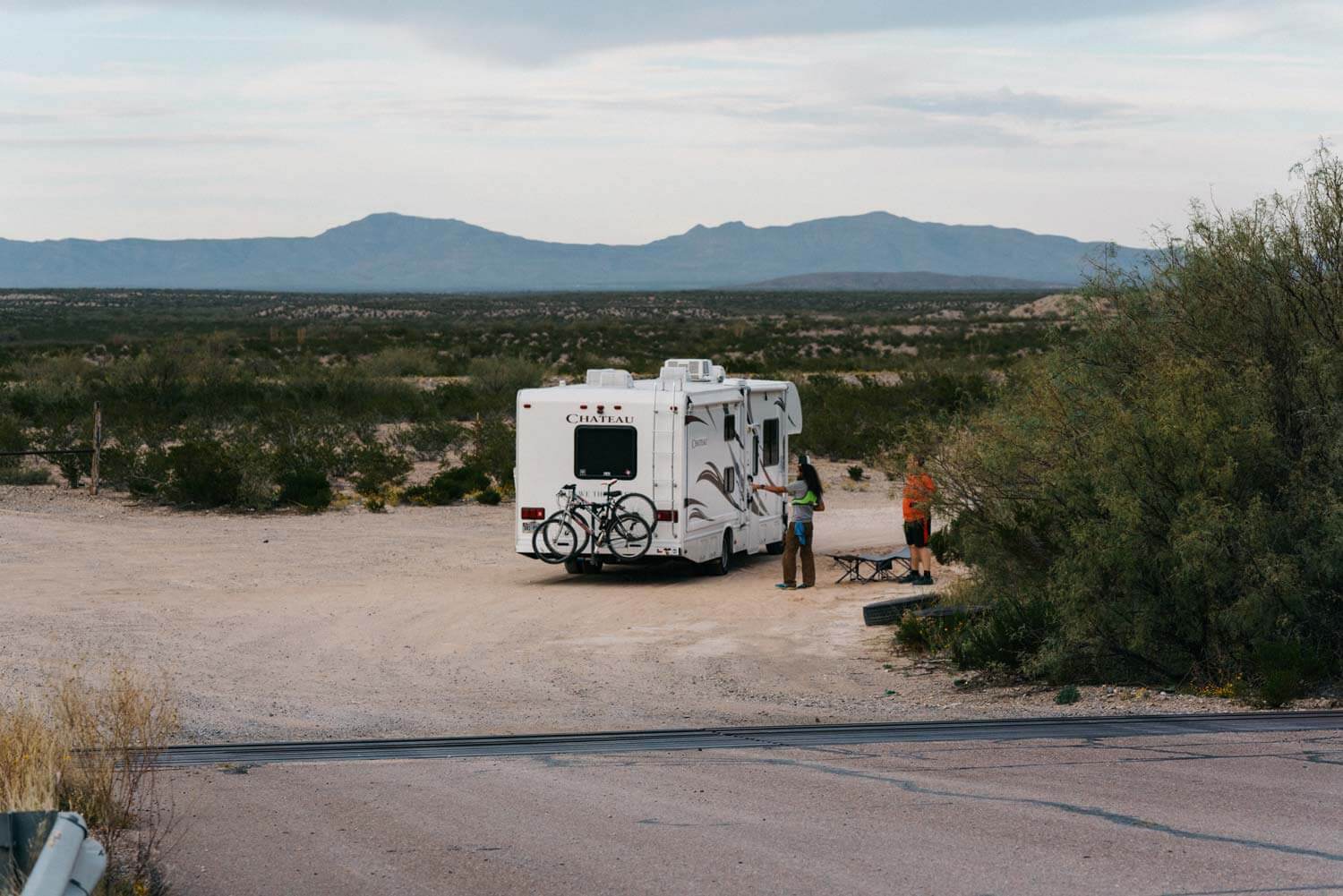
Things to look for:
- All hoses, cables, and attachments are disconnected.
- All hookup covers are latched.
- Compartments are closed and locked.
- Windows are closed and locked (don’t forget any small ones over the cab).
- Awnings are retracted (don’t forget to look up).
- The path behind, under, to the sides, and above the rig is clear.
- Taillights and brake lights are working correctly.
Don’t forget the leveling blocks!
PRO TIP: Create a checklist on your phone to use when you leave a campsite until you get the hang of the routine.
10. Travel at a Slower Pace
When you start traveling in your motorhome, your first instinct will be to make lots of plans for your camping trip. Most of us tend to pack a lot of travel into a small amount of time in an effort to see all the new places we can.
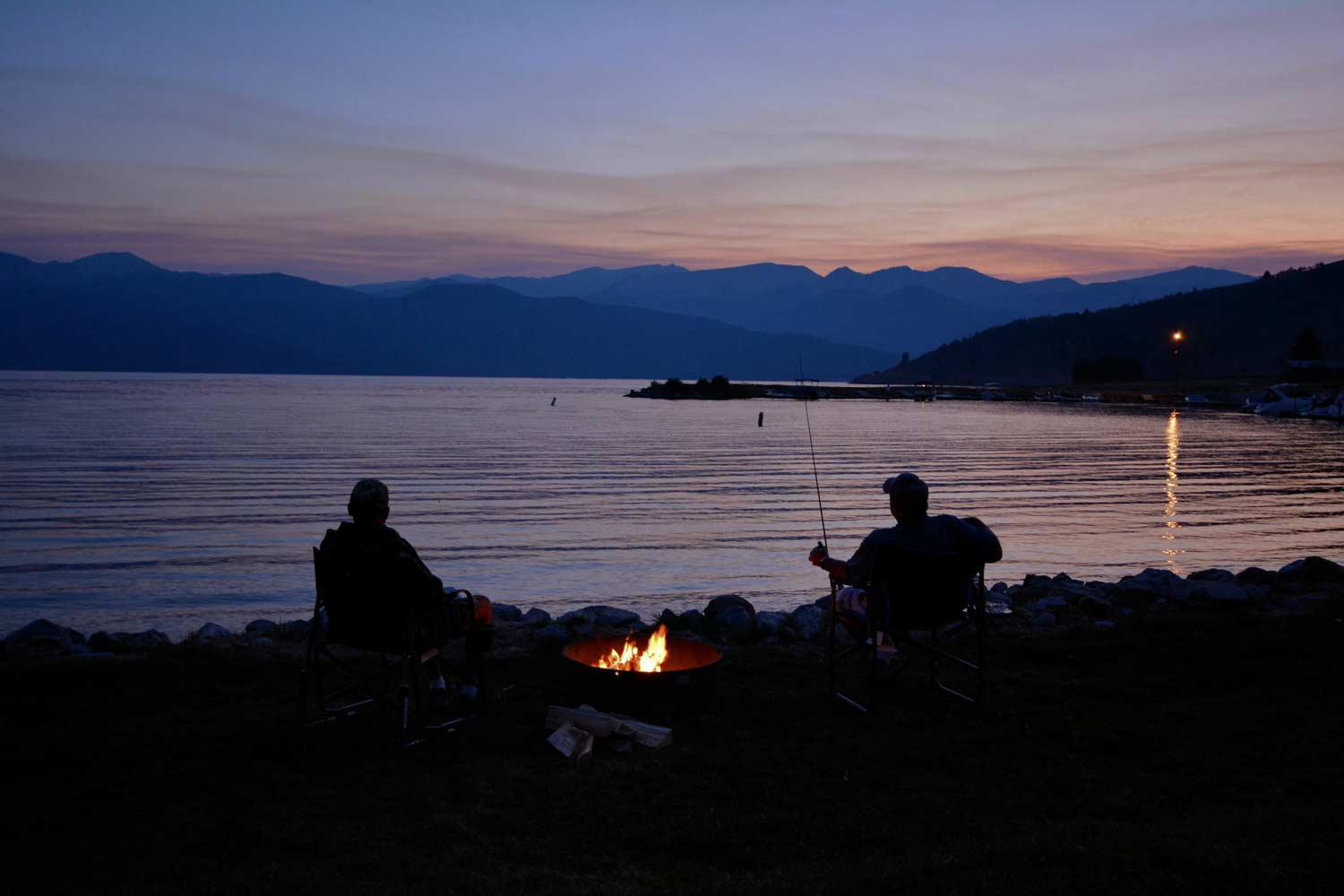
However, taking your time and traveling slower is a great way to enjoy RVing to the fullest.
Living and traveling in a motorhome is going to have challenges. You’ll enjoy the RV lifestyle more if you allow yourself breaks between the action and more time in fewer places.
Final Thoughts on the Best Motorhome Tips
Traveling in your motorhome will take time to navigate. Adapting to a small living space, conserving resources, and operating a tiny moving home is a challenge at first for new motorhome owners.
If it gets stressful, remember to slow your travel pace. There are lots of unexpected places to enjoy!
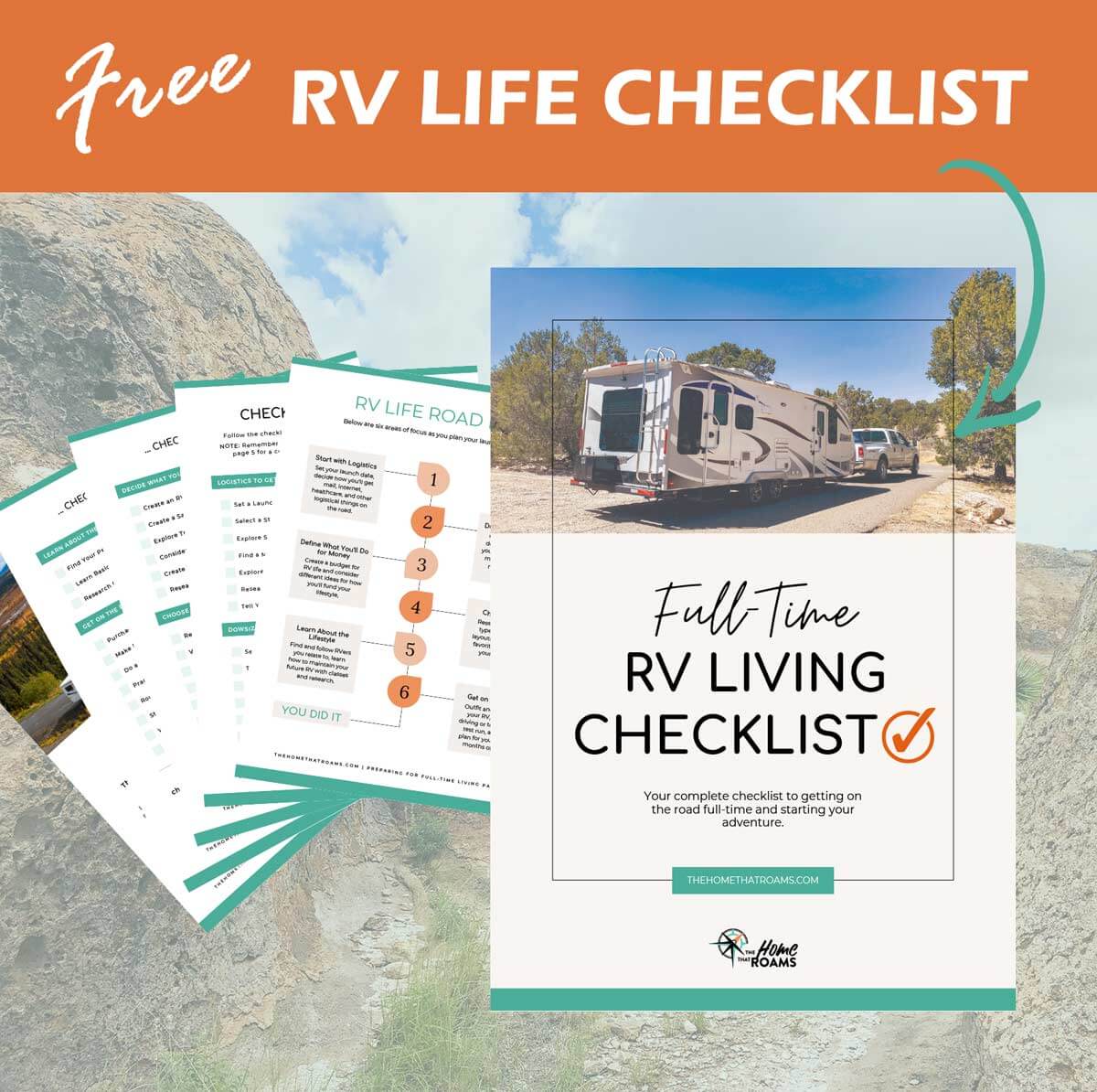
Your Guide to Launching RV Life
Road Map & Checklist – Start Now!
Unsubscribe at any time. View our privacy policy.
Want more beginner tips on RVing and how to get started?
Check out our RV gear lists, info on how to choose an RV, pros and cons of the lifestyle, must-have gear items, and more in our guide.
Like this post? Save it on Pinterest for later.
